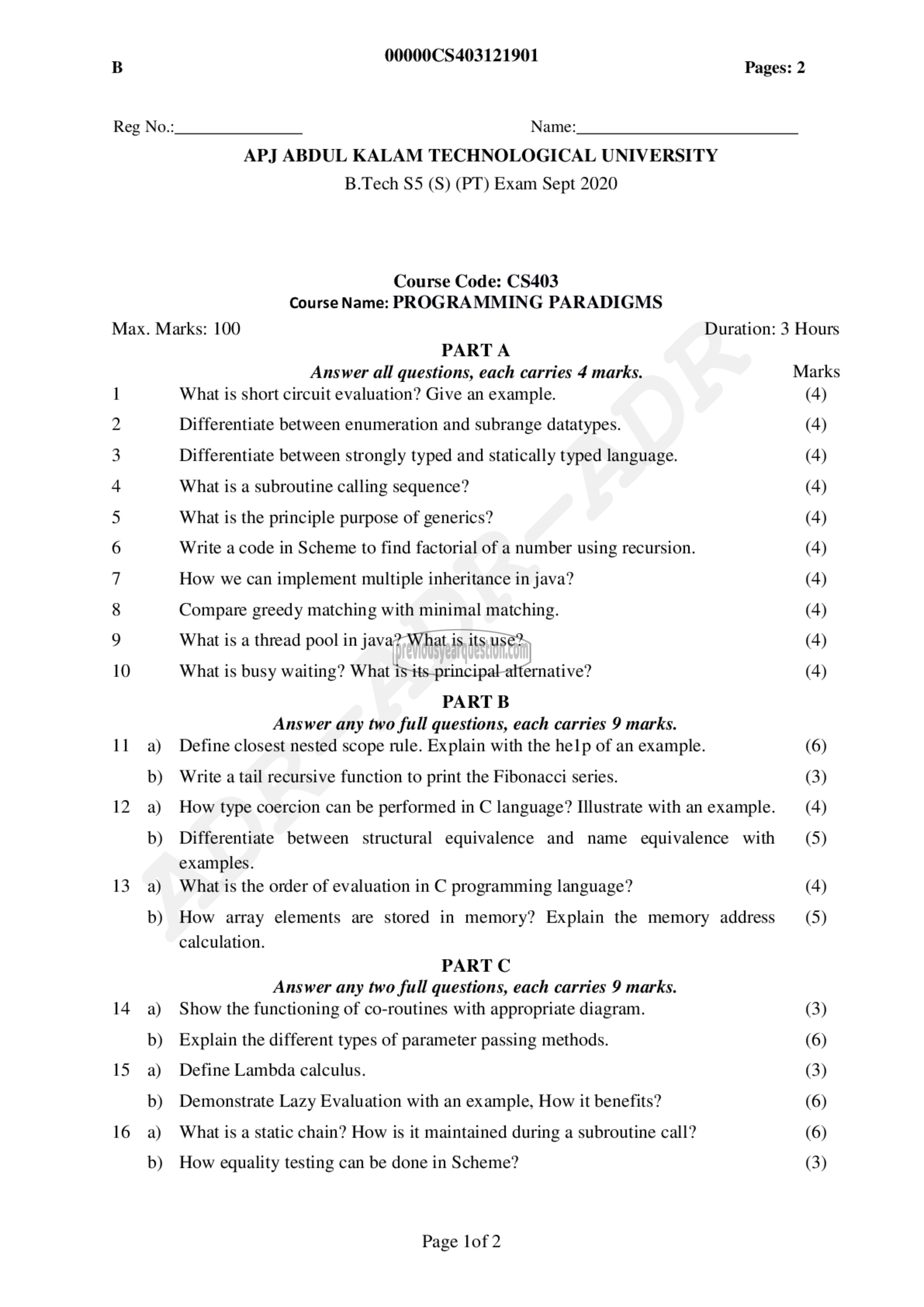APJ ABDUL KALAM TECHNOLOGICAL UNIVERSITY Previous Years Question Paper & Answer
Semester : SEMESTER 7
Subject : Programming Paradigms
Year : 2020
Term : SEPTEMBER
Branch : COMPUTER SCIENCE AND ENGINEERING
Scheme : 2015 Full Time
Course Code : CS 403
Page:1
Reg No.:
Max. Marks: 100
سم ^ ~ >+ nun ~ م6 بث
=
൭
11
12
13
14
15
10
a)
b)
a)
b)
a)
b)
a)
b)
a)
b)
a)
b)
00000CS403121901
Pages: 2
Name:
APJ ABDUL KALAM TECHNOLOGICAL UNIVERSITY
B.Tech 55 (5) (PT) Exam Sept 2020
Course Code: CS403
Course Name: PROGRAMMING PARADIGMS
PARTA
Answer all questions, each carries 4 marks.
What is short circuit evaluation? Give an example.
Differentiate between enumeration and subrange datatypes.
Differentiate between strongly typed and statically typed language.
What is a subroutine calling sequence?
What is the principle purpose of generics?
Write a code in Scheme to find factorial of a number using recursion.
How we can implement multiple inheritance in java?
Compare greedy matching with minimal matching.
What is a thread pool in java? What is its use?
What is busy waiting? What is its principal alternative?
PART B
Answer any two full questions, each carries 9 marks.
Define closest nested scope rule. Explain with the help of an example.
Write a tail recursive function to print the Fibonacci series.
How type coercion can be performed in C language? Illustrate with an example.
Differentiate between structural equivalence and name equivalence with
examples.
What is the order of evaluation in C programming language?
How array elements are stored in memory? Explain the memory address
calculation.
PART C
Answer any two full questions, each carries 9 marks.
Show the functioning of co-routines with appropriate diagram.
Explain the different types of parameter passing methods.
Define Lambda calculus.
Demonstrate Lazy Evaluation with an example, How it benefits?
What is a static chain? How is it maintained during a subroutine call?
How equality testing can be done in Scheme?
Page lof 2
Duration: 3 Hours
Marks
(4)
(4)
(4)
(4)
(4)
(4)
(4)
(4)
(4)
(4)
(6)
(3)
(4)
(5)
(4)
(5)
(3)
(6)
(3)
(6)
(6)
(3)
